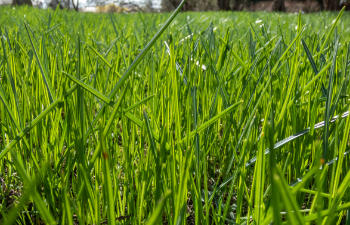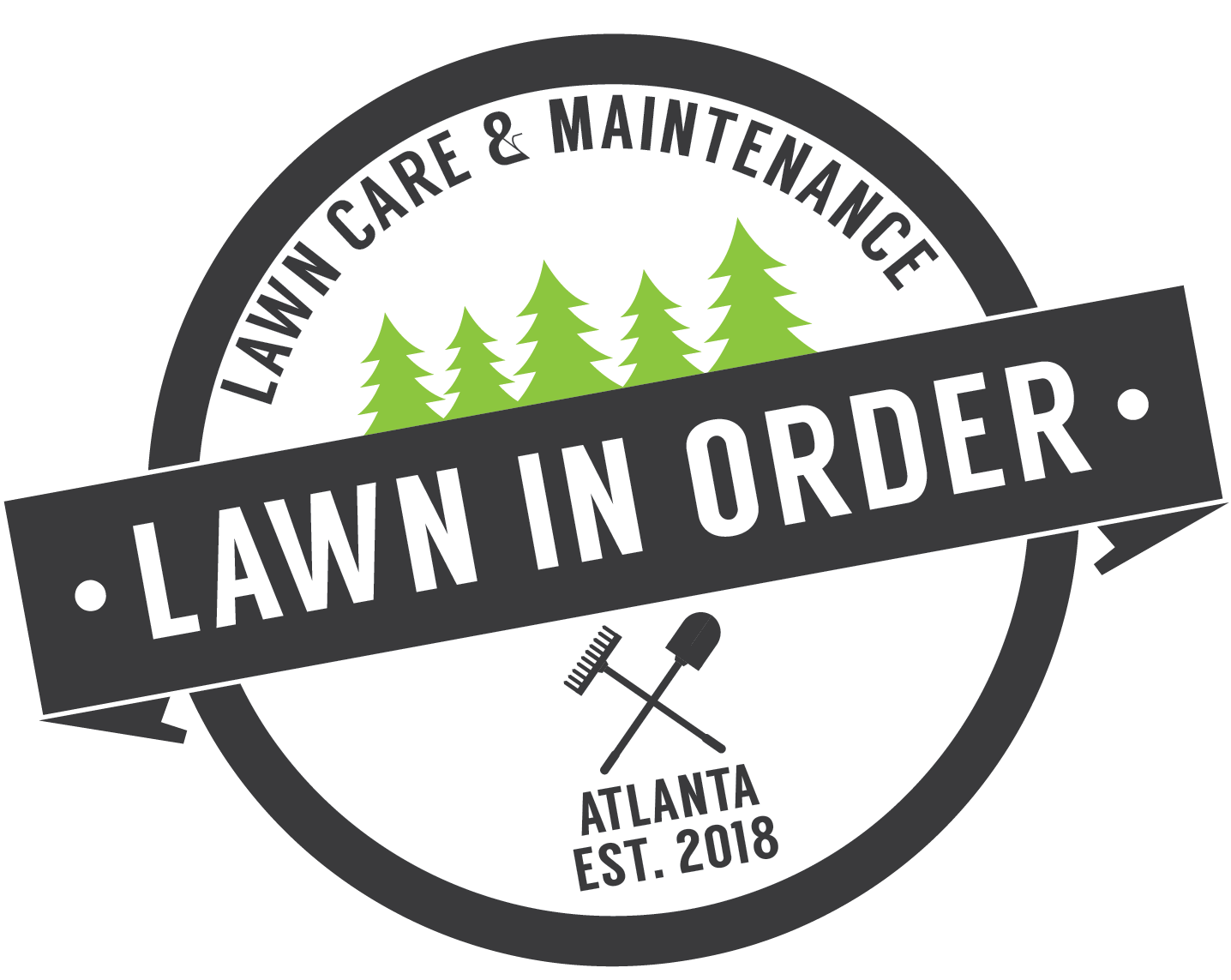
When the July heat bears down on Georgia, those shady spots in your yard can seem like a blessing. But if you’ve noticed your lawn looking thin, patchy, or struggling in these areas, you know that growing grass in the shade presents unique challenges. At Lawn In Order, we understand that maintaining a lush, healthy lawn throughout your property requires specialized knowledge and techniques, especially in those less sunny spots.
Understanding the Shade Challenge
Shade creates multiple obstacles for healthy grass growth:
Limited Sunlight
- Most grass varieties need 4-6 hours of direct sunlight daily for optimal photosynthesis
- Reduced light means less energy production for growth and development
- Plants grow thinner and weaker in an attempt to reach more light
Competition for Resources
- Tree roots aggressively compete with grass for water and nutrients
- Fallen leaves and debris can block what little sunlight reaches the grass
- Dense tree canopies can prevent rainfall from reaching the soil below
Environmental Differences
- Shaded areas retain moisture longer, increasing disease risk
- Soil in shaded areas is often more compacted and acidic
- Reduced air circulation can create perfect conditions for fungal problems
Understanding these challenges is the first step toward developing an effective care plan for your shaded lawn areas.
Choosing the Right Grass for Shaded Areas
The foundation of a successful shaded lawn begins with selecting grass varieties that naturally tolerate lower light conditions. For our Georgia climate, these options work best in shady spots:
Tall Fescue
- Excellent shade tolerance for warm-season climates
- Deep root system helps compete with tree roots
- Maintains color well during hot summers
- Requires less water than many other varieties
Fine Fescue Blends
- Superior performers in moderate to heavy shade
- Finer texture creates an elegant appearance
- Requires less fertilizer than other varieties
- Excellent cold tolerance for winter months
St. Augustine
- Good shade tolerance for southern lawns
- Thick growth helps crowd out weeds
- Beautiful blue-green color
- Establishes quickly through sod installation
When renovating or overseeding shaded areas, these varieties give you the best chance of success. Remember that even shade-tolerant varieties still need some sunlight – no grass will thrive in complete darkness.
Special Mowing Techniques for Shaded Areas
How you mow significantly impacts your shaded lawn’s health. Follow these specialized techniques:
Maintain Greater Height
- Set mower blades higher for shaded grass (3-4 inches ideal)
- Taller grass blades provide more surface area for limited sunlight
- Higher cutting height encourages deeper root growth
- Never remove more than ⅓ of the blade height in one mowing
Reduce Mowing Frequency
- Shaded grass grows more slowly and requires less frequent cutting
- Mow about half as often as sunny areas during peak growing season
- Always use sharp blades to create clean cuts that heal quickly
- Consider using a manual reel mower for smaller shaded areas to reduce soil compaction
Alternate Mowing Patterns
- Change direction each time you mow to prevent grass from leaning permanently
- Remove grass clippings in shaded areas to prevent smothering and disease
- Avoid mowing when grass is wet or during drought stress
- Consider hand-trimming in especially delicate areas
These mowing adjustments help maximize photosynthesis while reducing stress on already challenged grass plants.
Watering Wisdom for Shaded Lawns
Proper irrigation is critical yet often misunderstood for shaded lawns:
Balance is Key
- Shaded areas need less frequent watering than sunny spots
- However, they may need more water overall due to competition from tree roots
- Water deeply (6-8 inches) but infrequently to encourage deep root growth
- Monitor soil moisture regularly as shaded areas dry out more slowly
Timing Matters
- Water early morning (between 5-9 AM) in shaded areas
- This allows grass blades to dry completely during the day
- Evening or night watering in shaded areas dramatically increases disease risk
- Consider installing drip irrigation in heavily shaded spots for precision watering
Seasonal Adjustments
- Increase watering during periods of drought or extreme heat
- Reduce irrigation in spring and fall when temperatures are milder
- Monitor rainfall and adjust irrigation accordingly
- Consider using soil moisture meters to avoid guesswork
Remember that overwatering shaded areas is one of the most common mistakes homeowners make. Constantly soggy soil leads to shallow roots, disease issues, and moss encroachment.
Fertilization Strategies for Shaded Areas
Shaded lawns require a different approach to fertilization:
Reduce Quantity, Not Quality
- Apply approximately 2/3 the amount of nitrogen used on sunny areas
- Focus on slow-release formulations that provide steady nutrition
- Consider specialized “shade lawn” fertilizers with adjusted nutrient ratios
- Test soil annually to address specific deficiencies
Timing is Critical
- For lawns under deciduous trees, apply main fertilization in early spring before trees leaf out
- Provide a lighter application in early fall when trees begin to lose leaves
- Avoid summer fertilization of shaded lawns, which can promote disease
- Consider liquid applications for more precise control
Pay Attention to pH
- Shaded areas often become more acidic over time
- Test soil pH every 2-3 years and apply lime if below 6.0
- Address specific nutrient deficiencies indicated by soil tests
- Consider adding humic acid to improve nutrient availability
The right fertilization strategy provides your shaded grass with enough resources to thrive without promoting excessive growth that the limited sunlight can’t sustain.
Dealing with Special Challenges in Shaded Lawns
Several specific issues commonly affect shaded lawns that require targeted approaches:
Moss Management
- Moss thrives in shady, moist, acidic conditions
- Improve drainage through core aeration
- Adjust soil pH with lime applications
- Consider physical removal followed by reseeding with shade-tolerant grasses
Tree Root Competition
- Create mulch rings around trees to eliminate grass competition directly above roots
- Apply additional water during drought conditions
- Consider root pruning for especially aggressive tree species
- Avoid shallow-rooted trees like maples when planning new landscaping
Fungal Diseases
- Improve air circulation by thinning tree canopies where possible
- Apply fungicides preventatively during high-risk periods
- Remove fallen leaves and debris promptly
- Consider reduced irrigation during humid periods
Bare Spots and Thinning
- Overseed annually with shade-tolerant varieties
- Consider alternatives like shade-loving groundcovers for extremely dark areas
- Apply topdressing of compost to improve soil structure
- Reduce foot traffic in vulnerable areas
Addressing these specific challenges proactively will significantly improve your chances of maintaining a healthy shaded lawn.
When to Consider Alternatives to Grass
Sometimes, despite your best efforts, there are areas where grass simply won’t thrive. In these cases, consider these attractive alternatives:
Shade-Loving Ground Covers
- Mondo grass provides a grass-like appearance without the same light requirements
- Periwinkle (Vinca minor) offers glossy foliage and pretty blue flowers
- Pachysandra creates a dense, attractive carpet in deep shade
- Liriope offers grass-like texture with purple flower spikes
Mulched Areas
- Create defined mulched beds under trees with dense shade
- Use pine straw or hardwood mulch at 2-3 inch depth
- Install edging to create clean transitions to lawn areas
- Incorporate shade-loving perennials for visual interest
Hardscaping Elements
- Consider stone pathways through heavily shaded areas
- Create seating areas with permeable pavers
- Install dry creek beds to address drainage issues
- Use decorative gravel for texture and interest
Being realistic about what will grow in your shadiest spots can save you frustration and resources while creating an even more attractive landscape.
Expert Shade Lawn Care in Decatur
At Lawn In Order, we specialize in helping Decatur homeowners maintain beautiful lawns in all conditions, including challenging shaded areas. Our local expertise means we understand which grass varieties perform best in our specific climate and soil conditions.
Our comprehensive approach to shaded lawn care includes:
- Professional soil testing and analysis
- Customized fertilization programs for different lawn zones
- Expert pruning to improve light penetration
- Specialized aeration techniques for compacted shaded soils
- Overseeding with premium shade-tolerant seed blends
- Ongoing monitoring and adjustments throughout the seasons
We believe that with the right care, most shaded areas can support beautiful, healthy turf. However, we’ll also provide honest assessments when alternatives might better serve your landscape goals.
Contact Lawn In Order today to schedule your lawn assessment and discover how our expertise can transform those challenging shaded areas into strengths in your landscape. Remember, you don’t need to settle for patchy, struggling grass in the shady spots – with the right approach, your entire lawn can be lush, healthy, and beautiful all season long.

